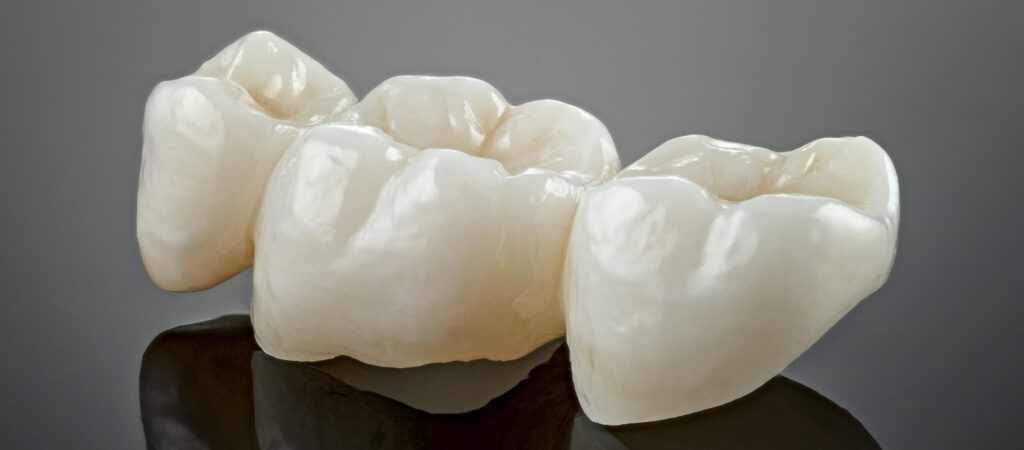Crowns and Bridges

A dental crown, commonly known as a cap, serves as a protective covering that fully encases a damaged or weakened tooth, restoring its original shape, size, strength, and appearance. It is particularly useful when a tooth has suffered extensive decay, fracture, large fillings, or undergone root canal treatment, making it too compromised for simpler restorations like fillings or bonding. Crowns safeguard the tooth from further deterioration while enhancing its functionality for everyday activities such as chewing and speaking. Among the various types available, porcelain or tooth-colored crowns are the most favored due to their natural resemblance to surrounding teeth, offering high durability that can last 10 to 15 years or more with proper care, though they may eventually require replacement. These crowns are custom-crafted to match the shape, size, and color of the patient’s teeth, resulting in a seamless, long-lasting, and aesthetically pleasing smile. Other options include porcelain-fused-to-metal crowns, which provide added strength for back teeth but may show a dark line at the gumline over time; all-metal crowns, like gold alloys, which are exceptionally robust but less ideal for visible areas due to their metallic look; and all-ceramic or zirconia crowns, which combine superior strength and aesthetics without metal, making them suitable for patients with allergies. The placement process typically spans two visits: the first for tooth preparation, impressions, and a temporary crown, and the second for fitting and cementing the permanent one. Maintenance involves regular brushing, flossing, avoiding hard foods, and routine dental checkups to prevent issues like sensitivity, loosening, or decay at the crown’s margins.
In contrast, a dental bridge is a fixed restoration designed to replace one or more missing teeth by anchoring an artificial tooth, known as a pontic, to adjacent natural teeth or dental implants, thereby restoring both function and appearance while preventing nearby teeth from shifting and maintaining proper bite alignment. Traditional fixed bridges, the most common type, involve crowning the abutment teeth on either side of the gap to support the pontic, making them strong and natural-looking, especially with porcelain materials, though they require reshaping healthy adjacent teeth. Cantilever bridges, anchored to only one side, are less invasive but less stable and best for low-force areas; Maryland bridges, bonded to the backs of adjacent teeth, offer minimal preparation and good aesthetics for front teeth but may not withstand heavy chewing; and implant-supported bridges, secured to surgically placed implants, provide exceptional stability without relying on natural teeth, though they involve a longer timeline and higher cost. The procedure generally includes an initial evaluation with X-rays and impressions, tooth preparation if needed, and final placement after a temporary bridge, with implant versions adding healing periods. Bridges can endure 5 to 15 years with diligent oral hygiene, including special flossing under the pontic, avoidance of sticky foods, and regular professional monitoring to address risks like abutment tooth decay or gum disease. Compared to crowns, which focus on protecting and restoring a single tooth, bridges address gaps from tooth loss to preserve facial structure and overall oral health. At Omaha Family Dental, both crowns—particularly porcelain for their beauty and durability—and bridges are available across all clinics, with personalized treatment plans tailored to individual needs for optimal results.



